During World War II Joe Wing flew 35 bombing missions
against the Japanese including one very special mission |
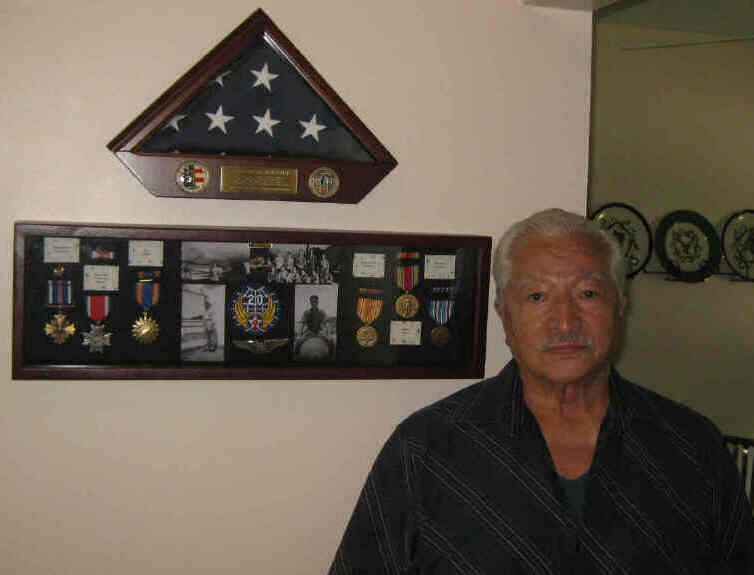 |
Raritan-online was honored to have the opportunity to talk with World War II Army Air Force veteran and Bridgewater resident Joe Wing.
Now 88 years old, Joe kindly sat down with us to tell of his fascinating wartime experiences as a gunner flying 35 bombing missions in a B29 over Japan during
World War II. One of those missions would go down in history.
Born in 1924, he grew up in in Springfield, Massachusetts. When the Japanese attacked Pearl Harbor on December 7, 1941, Joe wanted to enlist in the service
immediately, but since he was 17, he needed his parents’ permission and they told him it would be best to wait a year. In 1942 he turned 18 and enlisted in the Army.
The Air Force Division of the Army sounded exciting to him. The entrance requirements for the Army Air Force were high, but he passed the written exam and was sent
for training. He had wanted to be a pilot, but only a small percentage of trainees were selected to be pilots, so he settled for another position aboard the plane.
He trained to be a gunner (firing the machine guns of the plane) and a Flight Engineer. Initially, his training was on a B-17 Bomber, but when a new advanced bomber,
the B-29 began rolling off the assembly line, he was transferred over to the B29. His training was extensive – he attended several schools in many locations.
|
| Joe today at his home in Bridgewater |
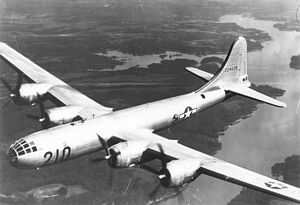 |
The B29 was a technological step ahead of all the other bombers of that era. It flew faster, further, and provided a comfortable ride
as it had a pressurized, heated, oxygen supplied cabin. This allowed the crew of 11 the luxury of not wearing the excessively heavy clothing and the oxygen masks
that were necessary on other bombers. (Their flying altitude was often 4-5 miles high where the temperature was 40 degrees below zero and oxygen was very thin.)
The guns on the B29 were much more advanced than the guns on other aircraft. The B29’s guns were remote controlled thus the vibrations that a gunner experienced
on the other planes were not found on the B29. Also his controls could fire multiple guns at once. Another advantage was that the firing mechanism would compute
the path of the enemy plane so the gunner just needed to line up the enemy in the scope of his gun and press the firing button.
|
| The B29 |
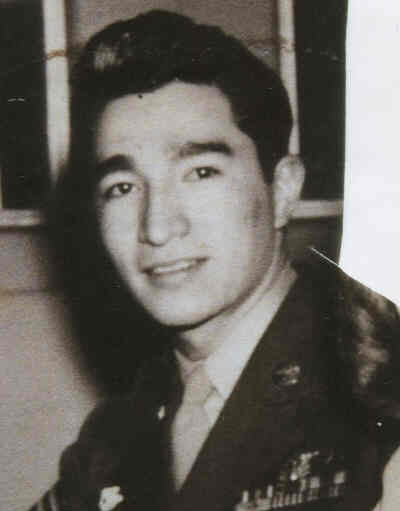 |
After 2 years of training stateside, Joe Wing was sent overseas to join the fight against Japan. In January of 1945 he arrived at Tinian Island
in the Marianas island group in the Pacific. This was about 1500 miles from Japan. That was 7 hours flying time one-way to bomb Japan.
The U.S. had great expectations for the new advanced B29s. They could carry a large bomb load and fly high enough to avoid most enemy fighter planes and the flak
from ground based anti-aircraft guns. Initially, the B29 bombing runs had mixed results. Most bombing runs resulted in the loss of several B29’s with only slight
damage inflicted on Japan. The main reason for the lack of results was that the new powerful B29 engines were troublesome at high altitude resulting in many planes
crashing and missions that had to be aborted. The accuracy of the bombing they did (at 5 miles high) was poor due to strange winds over Japan that were just being
discovered (These winds would soon be called “The Jet Stream”.)
|
| Joe Wing in 1943 |
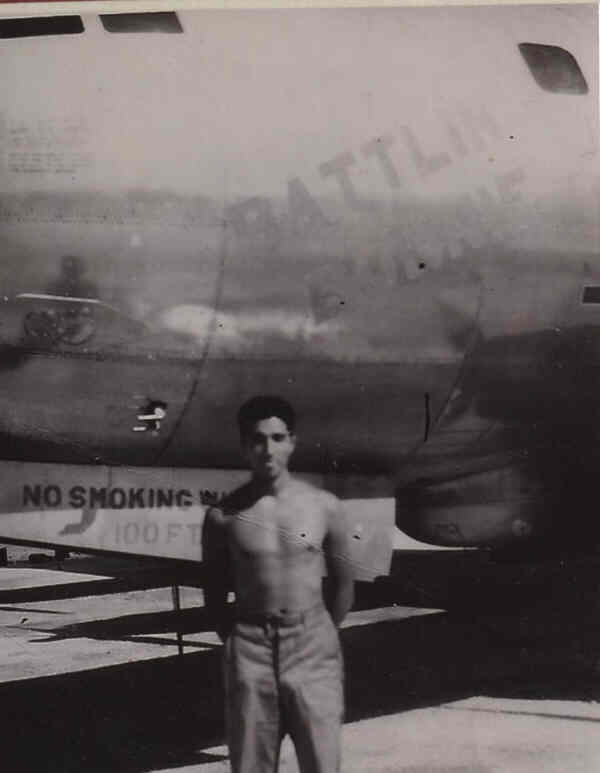 |
Despite the initial problems, the efficiency and effectiveness improved with each successful bombing run. The mechanics who serviced
the B29s learned what maintenance was needed to be done to keep these modern machines running smoothly. The bombing altitude was reduced for better accuracy.
The improved results were a remarkable turnaround. By June 1945 the B29s were able to make multiple bombing runs per week against Japanese cities with minimal
loses to the B29s and heavy bomb damage to Japan. Most Japanese cities were reduced to rubble. The estimated death total from the regular B29 bombing is
over 300,000 people. It was a remarkable feat that so much damage could be done to Japan from air bases that were over a thousand miles away.
|
The Battlin Bonnie - shown in background -
was one of the planes that Joe flew on |
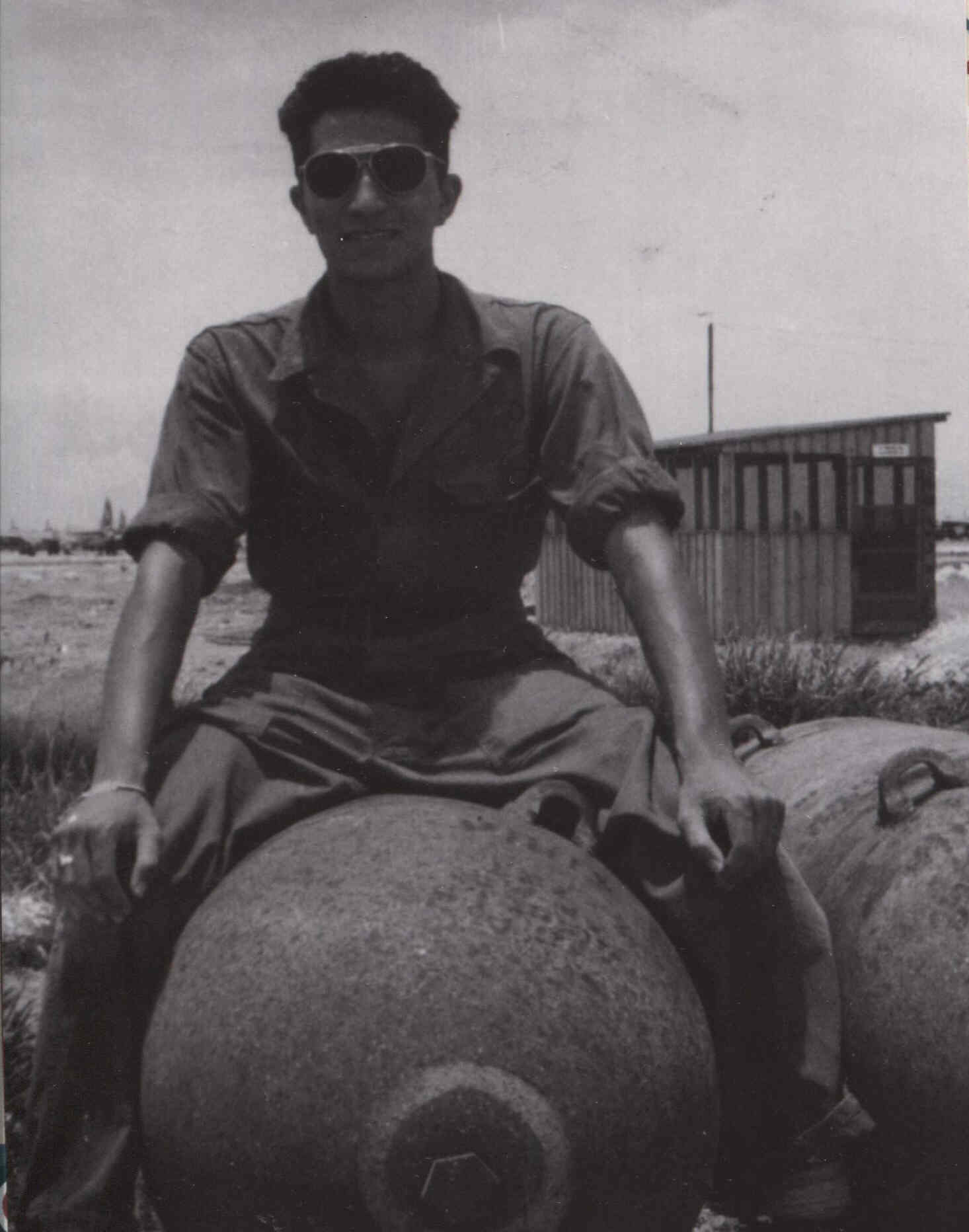 |
Joe Wing flew 35 missions over Japan. There were several types of bombing missions. The most common type was the dropping of conventional
bombs aimed at specific industrial or transportation targets. Another type was the scattering of incendiary (fire) bombs onto a city. A bombing run of this type
was done with hundreds of B29s resulting in large intense heat fires that devastated the Japanese cities as they consisted mainly of wooden structures that
burned easily. The resulting firestorm was sometimes so intense that the rising heat from the fire created an updraft that caused the B29 to be vaulted thousands
of feet upwards. The intense fires virtually leveled many square miles of Japanese cities leaving nothing standing and once great industrial cities in ruin.
A very little documented (yet effective) type of bombing mission for a B29 was a “mining mission”. Japan had few natural resources and it’s land was not capable
of growing enough food to feed its population. Thus they were always dependent on imports. Unfortunately for them, the geography of the Japan islands was such
that the shipping had to be done along a few very narrow water ways. This vulnerability was exploited by the U.S. as the B29s continuously dropped thousands
of mines in the narrow straights they used for shipping. The resulting effect on the amount of supplies imported into Japan caused massive shortages that crippled
the Japanese war making industry and brought their people to the brink of starvation.
|
| Joe on Tinian Island in 1945 |
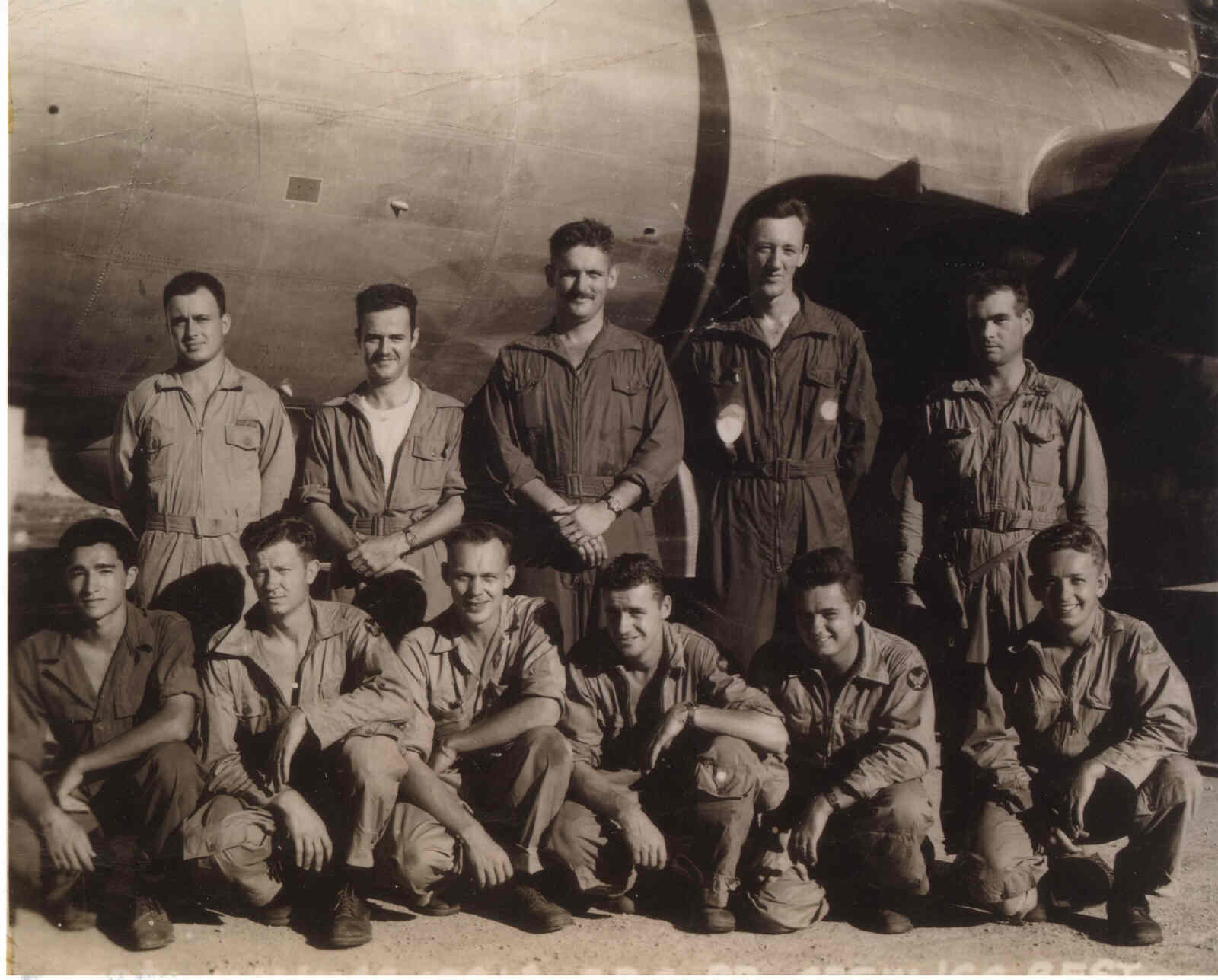 |
On flying missions, Joe manned the guns to ward off the Japanese fighter planes. He also served as the backup to the “flight engineer”
just in case the engineer became disabled. His firing was as much a deterrent as anything as it kept the enemy planes away. While Joe often fired at enemy
fighter planes he was never certain what damage was done as planes in an aerial dogfight moved hundreds of miles per hour across each other’s path. |
| Joe with the rest of the crew |
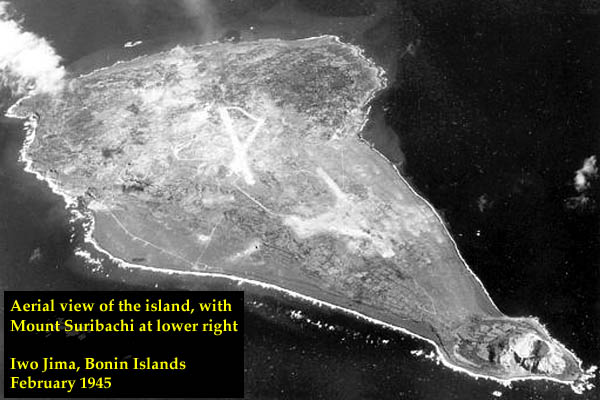 |
Joe recalls that when going out on missions, for the most part, he was not scared. He was young and it all seemed exciting.
A priest would give the air crew a well needed blessing just before takeoff, but this did not faze him as it was just part of the routine.
While almost always fearless, there was one mission in particular where fear took hold of him and the rest of the crew. On April 15th, 1945 while bombing Kawasaki,
Japan, the plane had unfortunately come across the path of enemy fighters and was hit with extensive machine gun fire. Numerous bullets had hit throughout the
plane knocking out two of the four engines. But most troublesome was the fact that a wing had been damaged. The crew could see the damaged wing –
it looked like it could break away from the plane any minute which would of course cause the plane to tumble into the ocean. The plane was flying, but barely.
At one point it seemed like the plane could not go any further. The pilot signaled to the crew to get their parachutes on and be prepared to jump.
The crew knew what the odds of survival were in this situation. Of the previous crews that had ditched at sea, just 20 % had been rescued.
The others would die at sea or be captured by the Japanese. The crew with their parachutes on waited for the order to jump. It was a tough wait.
The station manned by Joe was small - thus very uncomfortable with a parachute on. It was very tense - Joe remembers that the usually fearless
crew was indeed shaken. Minutes seemed like hours as the ship jerked and sputtered – but keep flying. Then the captain told them that they could take
off their parachutes as he felt the plane could make it back to the U.S. occupied island of Iwo Jima. |
An emergency landing at
Iwo Jima saved the crew |
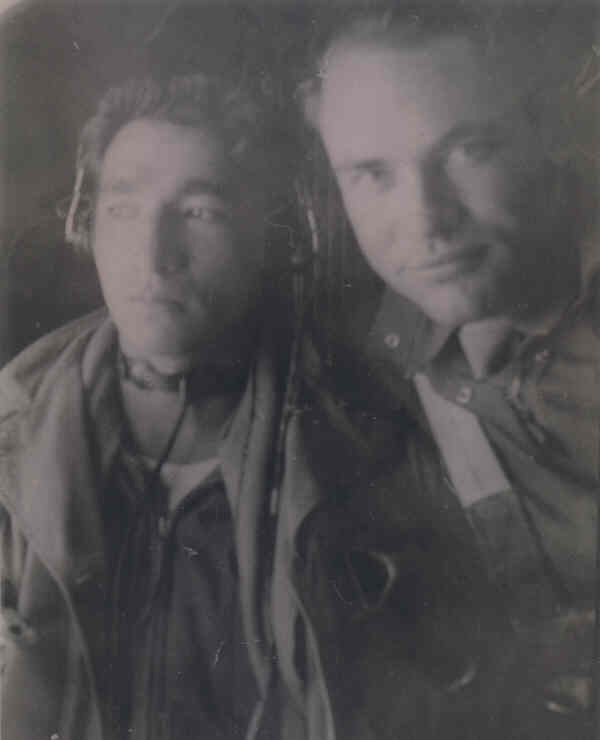 |
The U.S. Marines had taken Iwo Jima a couple months back.
The island now functioned as an emergency landing strip for damaged U.S. planes. As the plane began to touch down on the runway, the third engine went out,
but the plane landed safely. Joe Wing along with the rest of the crew felt relief. However, that relief quickly turned to mourning as they saw that one of
their fellow crewmen, Ted Bysens, was dead. He had been killed hours ago when the plane was hit by machine gun fire. They had not realized it as
Ted’s position as radar-bombardier was in a separate compartment in the plane and the crew had just assumed communication to his station had been cut off when the
plane was hit. No one had checked on him in flight as on a damaged plane the crew did not move around as the shifting of weight could upset the fragile balance of
the troubled aircraft. It was a tough loss for the crew, especially for Joe as he had served as the best man at Ted’s wedding. Ted had met a girl outside of the
training base when he and Joe when stationed there. In wartime there were many quickie marriages before a guy went overseas and Ted had decided to marry his new
girlfriend. Now his bride would never see him again.
After landing at Iwo Jima, the damaged plane was inspected by one of the commanders. He told the crew and some engineers to remove anything of value from the
plane as the plane was so badly damaged that it was being junked. Today Joe Wing credits the flying skills and calm in life and death situation of the pilot
George Davis with the reason that they were able to land safely. Joe would keep in contact with George after the war until George’s death 15 years ago.
|
Joe with his friend Ted Bysens.
Ted would be killed in the war |
| After flying over 30 bombing missions Joe had thought he had been through it all,
however he would be sent on one final bombing mission that would be unlike anything else the world had ever seen.
It would be over Hiroshima on August 6th 1945. |
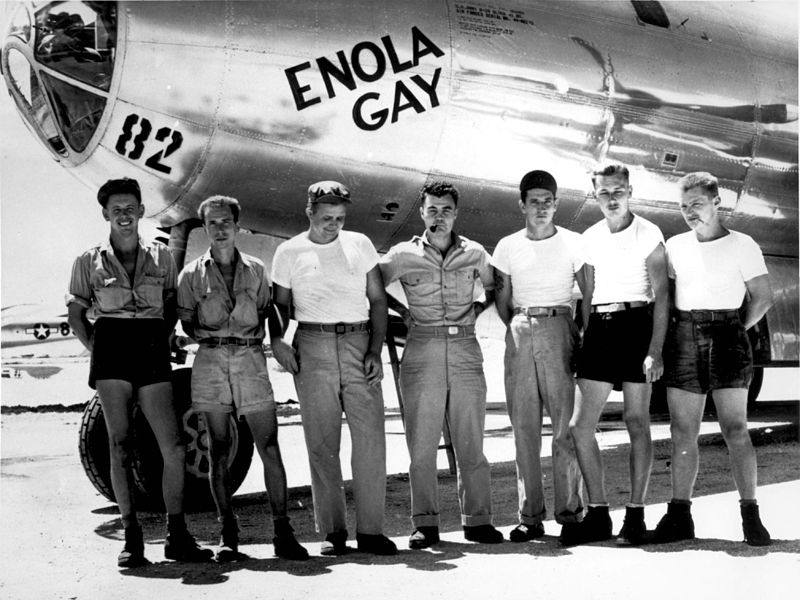 |
While stationed in Tinian in the beginning of August, 1945, Joe noticed one plane and storage location had guards around it. This was very unusual. The next day he was told that he would be flying on a special bombing mission over Japan. His plane would not be bombing - they along with a couple other B29s would be protecting a B29 that had recently been named The Enola Gay. At a pre-flight briefing he and the other crewmen were issued dark goggles that they were to wear as there would be a tremendous flash of light when this new special bomb was dropped. They flew from Tinian Island along with the Enola Gay, and two another B29s – one that would take photographs and one that would take scientific measurements. The primary target that day was Hiroshima. The bombing run went like clockwork. There was no enemy opposition, the weather was clear, and the bomb was dropped as scheduled. As soon as the bomb was released, the plane banked hard left full throttle and flew away as quickly as possible to avoid the forthcoming blast. By the time the bomb exploded, they were over 9 miles away, but the turbulence from the blast still shook the plane.
Joe along with the plane’s crew saw a tremendous amount of smoke and fire over what had been Hiroshima. They knew indeed it was a special bomb, but they could not fully comprehend what had happened.
|
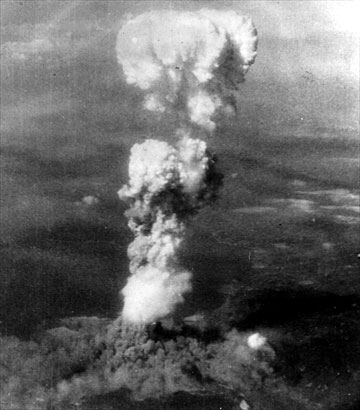 |
Joe would learn later that he faced the dangers of the unknown in that bombing run. It was thought that the blast could knock the planes out of the sky killing the crew or forcing them to bailout over Japan. To avoid torture before certain death at the hands of the Japanese, the crew of The Enola Gay had been given suicide pills, but Joe’s crew were given no such pills. Fortunately, all the planes returned safely.
After landing back at Tinian, the crew learned what had been dropped on Hiroshima. It was an atomic bomb that had the force of 20,000 tons of TNT. Up to that time, it was by far the most powerful bomb ever dropped. A few days after the bomb drop, Paul Tibbets, the pilot and commander of the bomb run, addressed them to thank them and explain some of the details about this single bomb that could destroy an entire city. Just a week later, the Japanese would surrender ending World War II. Amazingly, that surrender came without the U.S. setting foot on the Japanese homeland. It was the months long devastating bombing by the B29s - along with two atomic bombs - that finally caused Japan to surrender. The Japanese’s warrior code was to never surrender - they preferred to “fight” to the death, but the aerial bombing - both conventional and nuclear - did not contain much “fight”. The Japanese warrior looking to fight a final glorious battle was reduced to just standing and waiting to being bombed from above.
|
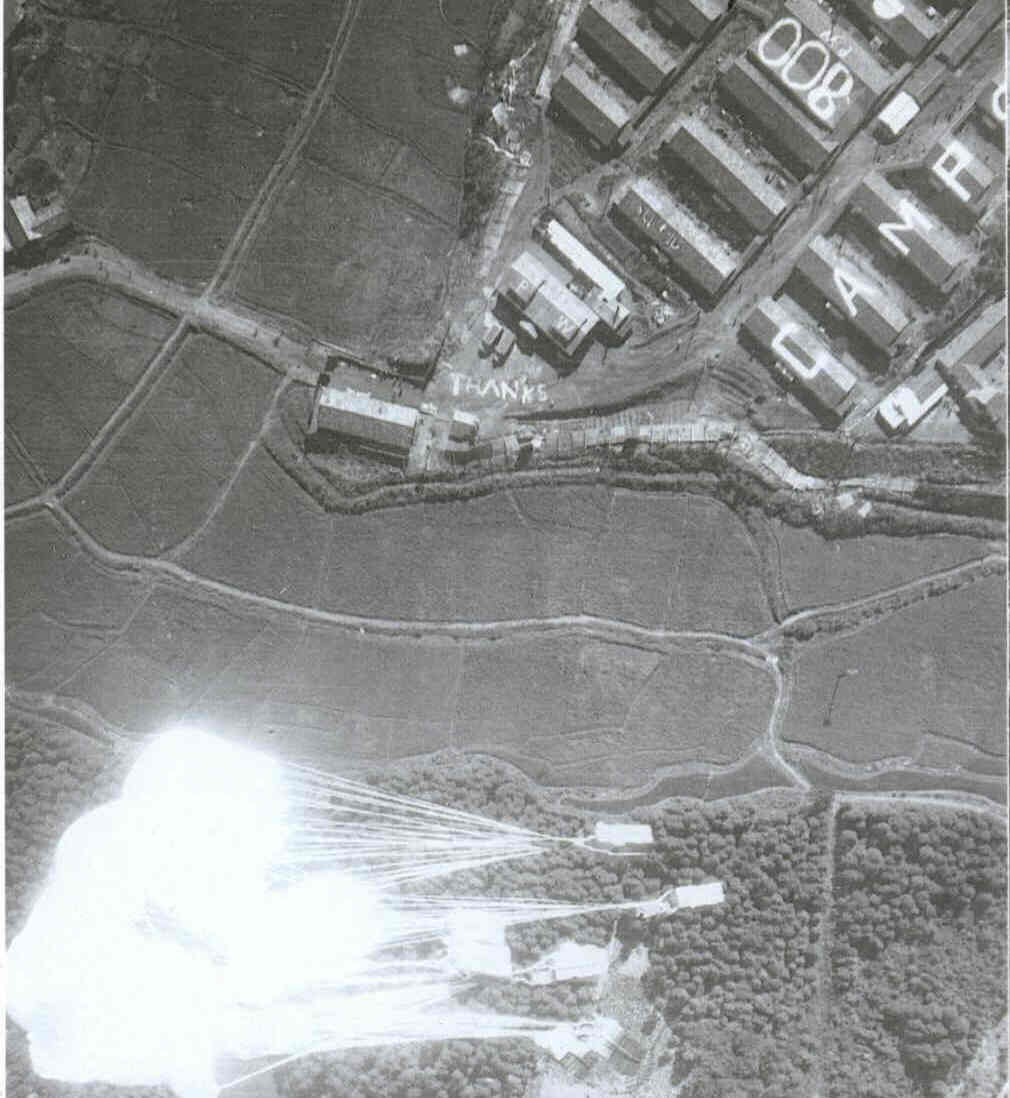 |
After the Japanese surrender on August 14th, 1945 there were still some missions remaining for the B29s. Throughout Japan, many Americans were still in prisoner of war camps that had now been abandoned by the guards. The guards, while often brutal throughout the years, had fed the prisoners, but now the guards were gone. Some camps had a little food stored when the guards fled, others did not. The locations of the “prisoner of war” camps were quickly identified. The U.S. put together supplies of food and medicine (and some liquor too) that was to be dropped to the starving men. Joe Wing flew on one of these missions. The plane flew low and slow to assure the accurate dropping of the supplies by parachute. He recalls what a delight it was to see the men waving and jumping up and down. The former prisoners quickly got to the packages and then started to rearrange the parachutes on the ground. The B29 circled overhead as the parachutes were being positioned. Joe and the crew saw that they were spelling out the word “THANKS”. Joe had brought a camera along on this flight and snapped up a photo of this.
A few days later, Joe Wing would receive orders to move away from the battlefront to the homefront. His job was done. The war was over. He had done his part in bringing it to an end. He would return to his home. He would eventually become a police officer and serve 25 years on the New York City Police Department. In 1954 he married his wife Teresa. In 2000, they would move to Foothill Road in Bridgewater where they remain to this day.
While sitting in his peaceful home today, Joe says that he sometimes wonders if the memories of his war time experience all real - as the soldier’s life he once lived seems so far removed from his quiet life today. This author’s thoughts are that while his peaceful life today is indeed far removed from the battles he fought, it is the victory in the battles he fought that helped give this country (and Joe Wing ) the peaceful life that we all have today.
|










